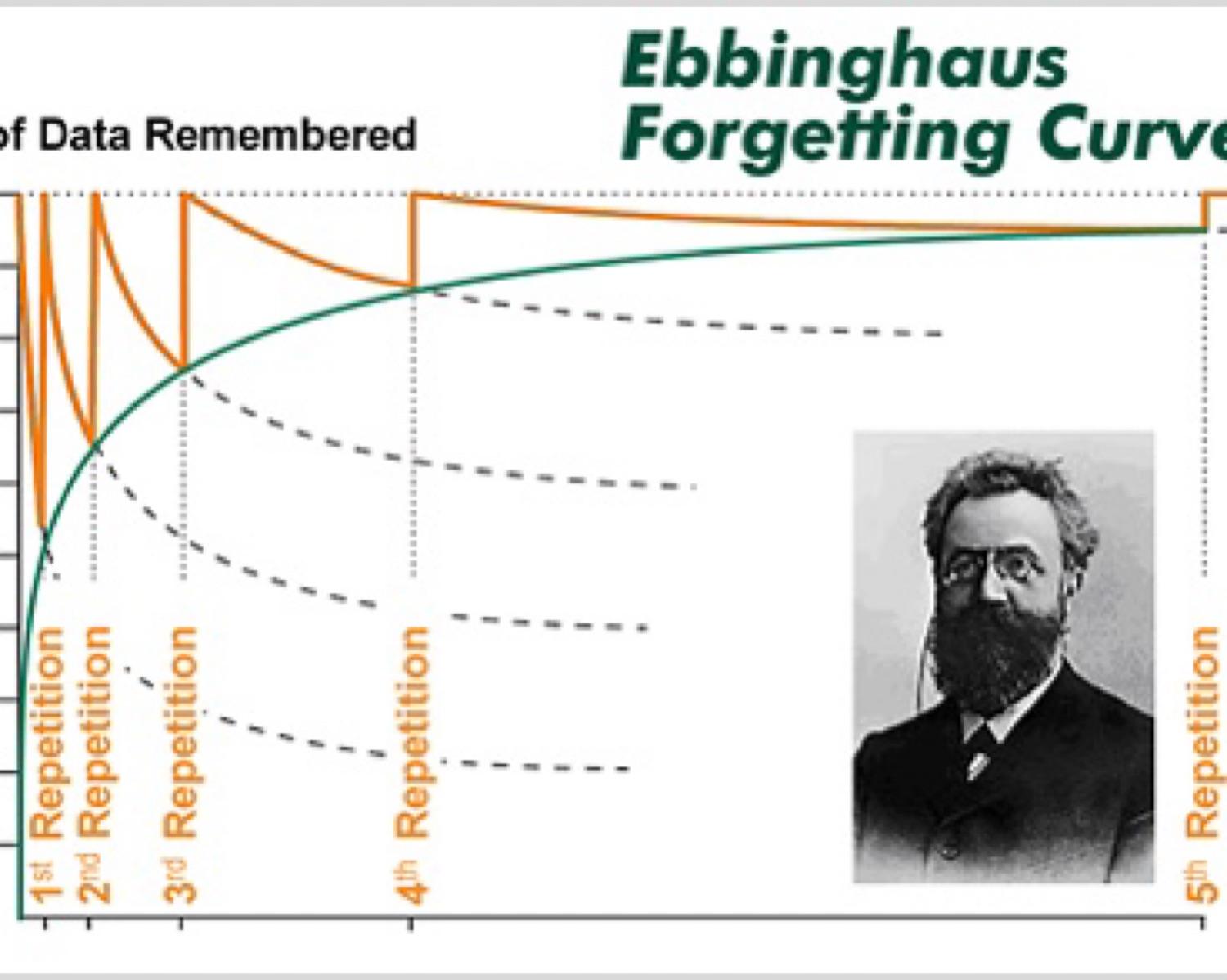Explore the World's Best Ideas
Join today and uncover 100+ curated journeys from 50+ topics. Unlock access to our mobile app with extensive features.
Cognitive Psychology Principles for Better Learning
Understanding how the mind works can help us learn faster, remember more information, and enjoy ourselves more when engaged in intellectual activities.
In this post I will give you principles from cognitive psychology to help you understand how your mind works along with practices to help you learn more effectively.
2
16 reads
Principle: The Forgetting Curve
One of the first models in cognitive psychology came from Herman Ebbinghaus in the 1880s. Ebbinghaus measured how well test subjects could recall information over time and found that while at the time of learning memory was completely accurate, it could drop by as much as 50% in only one day!
Practices such as spaced repetition and mnemonic techniques can help reduce the amount of information forgotten over time.
3
11 reads
Practice: Spaced Repetition
If you try and learn everything you need to know in one study session, then the effects of the forgetting curve will cause you to forget most of that information quickly. Instead, what you can do is space out the information you need to learn over time. Reviewing the information over a period of days or weeks allows the brain to form and strengthen connections so that the forgetting curve becomes less steep.
The best way to do spaced repetition these days is with software. Some of the best apps for this are Anki, Brainscape, and Quizlet. Check them out!
3
9 reads
Practice: Mnemonic Devices
While spaced repetition controls the process of forgetting, mnemonic techniques allow us to control the process of remembering. When learning new information, your brain will store it more effectively if it can assimilate the new information into existing structures.
Most people know about mnemonics from making acronyms in school. For example, “Every Good Boy Deserves Fudge” is a popular way to remember that the lines of the treble clef are EGBDF. Mnemonics aren’t just about acronyms though, any technique that allows you to incorporate new information into existing structure is a mnemonic.
3
10 reads
Practice: Method of Loci
The method of loci is one of the most ancient mnemonic techniques, and is sometimes known as a “memory palace.” If you need to remember a lot of new information, say, the names of the U.S. presidents, then you can imagine putting each of them somewhere in your childhood home. I might imagine walking into my kitchen to be greeted by George Washington, then finding Andrew Jackson in the crawl space. Give it a try!
The reason that the method of loci can be so effective is that it allows your brain to associate factual information with spatial information.
4
8 reads
Principle: Working Memory
One of the most famous papers in cognitive psychology is George Miller’s The Magical Number Seven, Plus or Minus Two.
In the paper, we learn that the number of items most people can hold in working memory is seven, plus or minus two.
Working memory is incredibly important because it is the type of memory that we rely on when we are reasoning and making decisions. The amount of information we can hold in working memory thus influences how well we can think on our feet.
The key to mastering working memory is to understand what exactly Miller meant by item.
2
7 reads
Principle: Chunking
We can hold five to nine items in working memory at a time, but what is an “item?”
Miller defined an item as a unit of meaningful information. What makes a unit of information meaningful depends on our mind, so we can combine bits of information into meaningful chunks in whatever way makes sense to us. For example, when trying to remember a phone number, do you remember it more easily if the area code is your own area code or not? Obviously it is easier to remember a phone number if it has the same area code. This is because you have chunked the area code into one unit of meaningful information
2
8 reads
Practice: Making Chunks
Fortunately, we have control over how we chunk information. We can use this skill when we are learning new information by taking the new information, breaking it into pieces, making associations between the pieces, and then remembering the groups of information put together. This is how musicians can read complicated sheet music, for instance. They are able to chunk the arpeggios and chords and melodies into chunks of information like “G major arpeggio” instead of trying to remember “G, B, D, G” every time they read the sheet music.
2
7 reads
IDEAS CURATED BY
I think about #AI, #AIEthics, #Philosophy, #Psychology, and #Art Let’s philosophize!
CURATOR'S NOTE
Here are some principles of learning and memory from cognitive psychology to help you master your mind! I will add more later.
“
Similar ideas
Read & Learn
20x Faster
without
deepstash
with
deepstash
with
deepstash
Personalized microlearning
—
100+ Learning Journeys
—
Access to 200,000+ ideas
—
Access to the mobile app
—
Unlimited idea saving
—
—
Unlimited history
—
—
Unlimited listening to ideas
—
—
Downloading & offline access
—
—
Supercharge your mind with one idea per day
Enter your email and spend 1 minute every day to learn something new.
I agree to receive email updates








